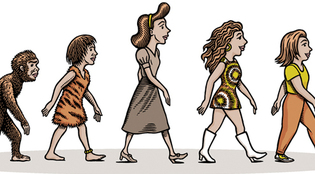 loading
loading
FindingsWe’re not there yet Gregory NemecView full imageThe perception that evolution no longer operates in modern humans is widespread, says biology professor Stephen C. Stearns—but wrong. Modern medicine has radically changed our survival rates, but, he points out, “natural selection is about reproductive success, not just survival.” In a statistical analysis of the medical histories compiled by the Framingham (Massachusetts) Heart Study since 1948, Stearns and his colleagues identified several traits that, in women, are associated with having more children. They studied data on 2,238 women—two generations—who had finished menopause, looking for correlations between number of live births and characteristics such as low blood pressure and early age at first birth. (The study was published in the October 21 issue of the Proceedings of the National Academy of Sciences.) After largely eliminating the effects of education, smoking, and contraception, the researchers took the next step. Applying their information on the degree to which each trait raised the number of live births, and combining it with information on the degree to which each trait can be inherited, they projected forward. Their calculations predicted that, for example, women of the third generation would have their first child an average of one month earlier, and begin menopause an average of one month later, than their 2,238 forebears. When they projected forward ten generations, Stearns and his team saw larger changes: “Our statistical model predicts that in 2309, the women of Framingham will have significantly lower blood cholesterol, blood pressure, and blood glucose. The age at first birth will be five months earlier, and age of menopause will go up by ten months, so the reproductive window broadens. And they’ll be shorter by about an inch, and weigh about two pounds more than they do today.”
The comment period has expired.
|
|